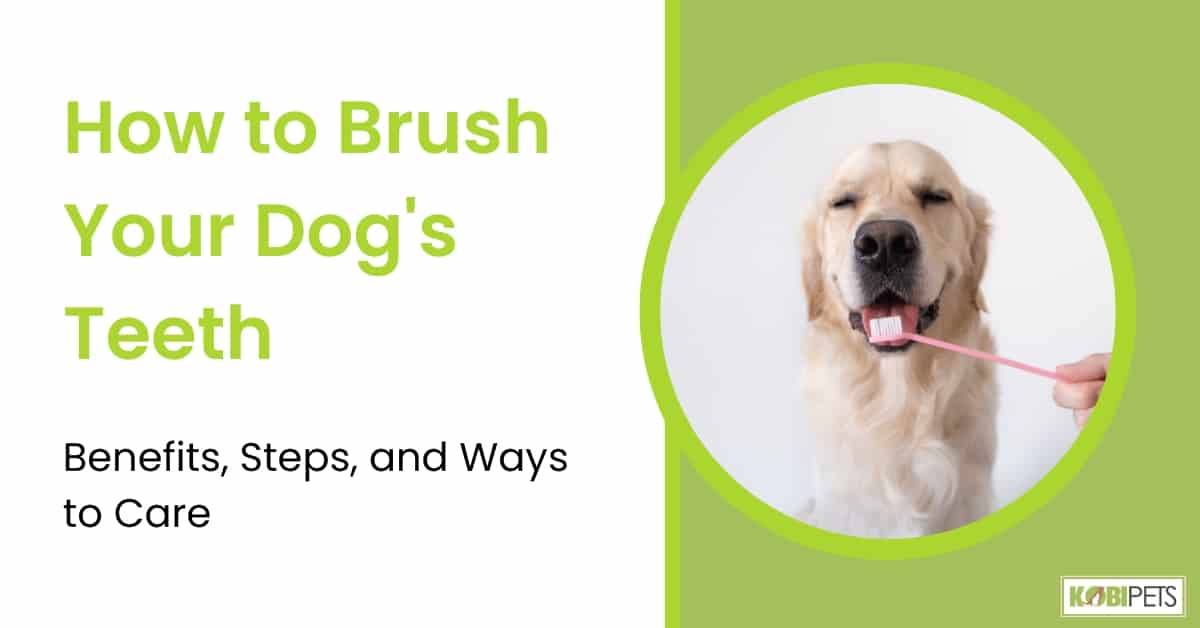
Brushing your furry friend’s teeth is an important part of their daily care, yet it can be a daunting task for many pet owners.
To brush your dog’s teeth, get a toothbrush and toothpaste specifically made for dogs. Let your dog sniff and get used to the toothbrush and toothpaste, then gently lift their lip to expose their teeth. Gently brush their teeth in a circular motion, gradually increasing the time. Reward your dog with treats and praise to reinforce the positive association. Brush their teeth at least 2-3 times a week to maintain good dental hygiene.
In this article, we’ll provide tips on how to brush your dog’s teeth quickly and effectively. Read on to learn more!
Importance of Brushing a Dog’s Teeth
It is essential for pet owners to take care of their pets’ oral hygiene. Brushing your dog’s teeth regularly is one way to help keep your pup healthy. It is important to start introducing tooth brushing when your pup is still a puppy, so it can become a regular part of their daily routine.
Brushing helps prevent dental problems like bad breath, tartar buildup, infections, and cavities. Regular brushing also helps remove plaque buildup that can cause gum disease as dog’s age. The act of brushing can also promote better mental stimulation and bonding between the owner and the pet.
Using a soft-bristled brush and toothpaste designed specifically for dogs will make the process much easier. With just a few minutes each day devoted to brushing, you’ll be able to help keep your pup’s teeth clean, healthy, and happy!
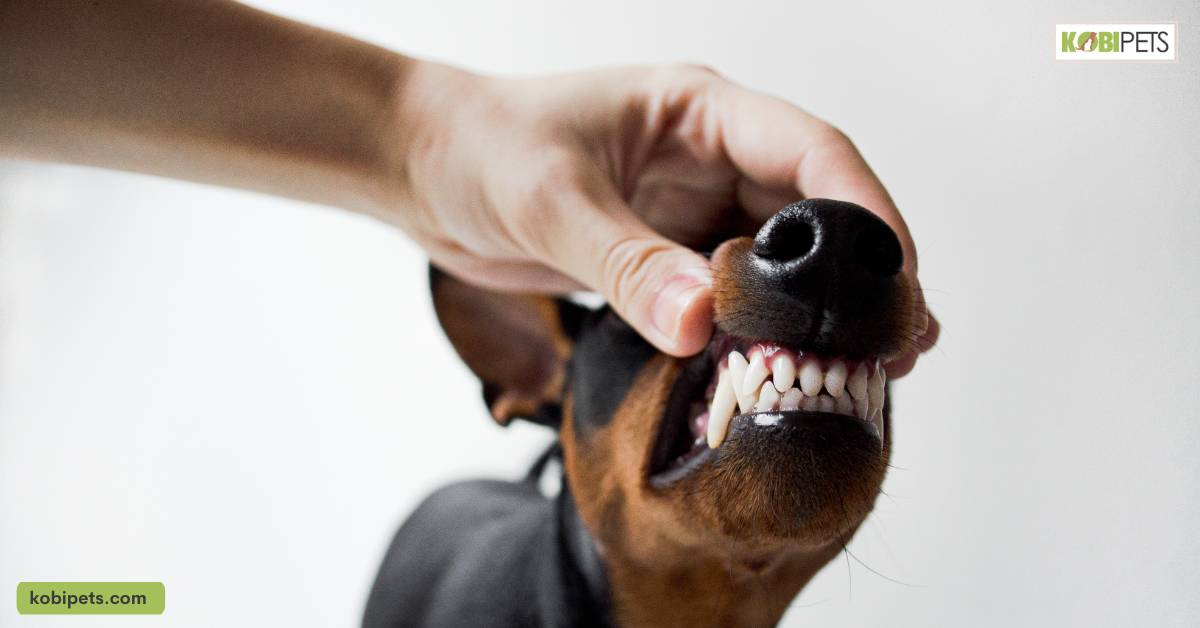
Benefits of Proper Dental Care for Dogs
Proper dental care is essential for the overall health and well-being of dogs. Neglecting dental care can lead to serious problems such as gum disease, tooth decay, and other health issues.
Regular brushing, along with regular dental check-ups with a veterinarian, is an important part of maintaining good dental hygiene for your dog.
Here are some of the benefits of proper dental care for dogs:
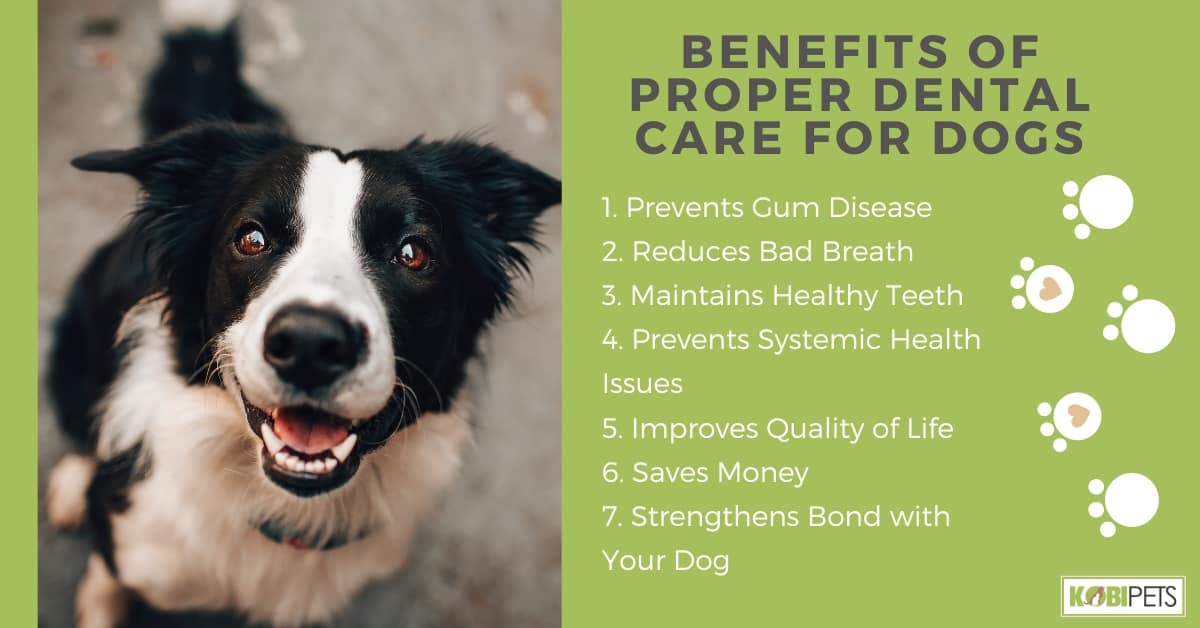
Benefits of Proper Dental Care for Dogs
- Prevents Gum Disease: Brushing your dog’s teeth regularly helps remove plaque and tartar, which can lead to gum disease. Gum disease is a painful condition that can cause your dog to lose their teeth and affect their overall health.
- Reduces Bad Breath: Regular brushing helps remove food particles and bacteria from your dog’s mouth, reducing bad breath.
- Maintains Healthy Teeth: Brushing and other forms of dental care help keep your dog’s teeth clean and healthy, reducing the risk of cavities and other dental problems.
- Prevents Systemic Health Issues: Neglecting dental care can lead to serious health problems, such as infections that can spread to other parts of your dog’s body.
- Improves Quality of Life: Regular dental care can help improve your dog’s quality of life, making it easier for them to eat, play, and be active.
- Saves Money: Regular dental care can save you money in the long run by preventing more serious and costly dental problems from developing.
- Strengthens Bond with Your Dog: Spending time with your dog while brushing their teeth or at the vet for a dental check-up can strengthen the bond between you and your furry friend.
How to Brush Your Dog’s Teeth: Step Guide
Brushing your dog’s teeth is an important part of their overall health and wellness routine. Regular brushing can help prevent gum disease, tooth decay, and bad breath.
Just like humans, dogs can develop plaque and tartar on their teeth if they aren’t cleaned regularly. The good news is that brushing your dog’s teeth is a simple process that can be done at home with the right tools and techniques.
Here’s how to brush your dog’s teeth:
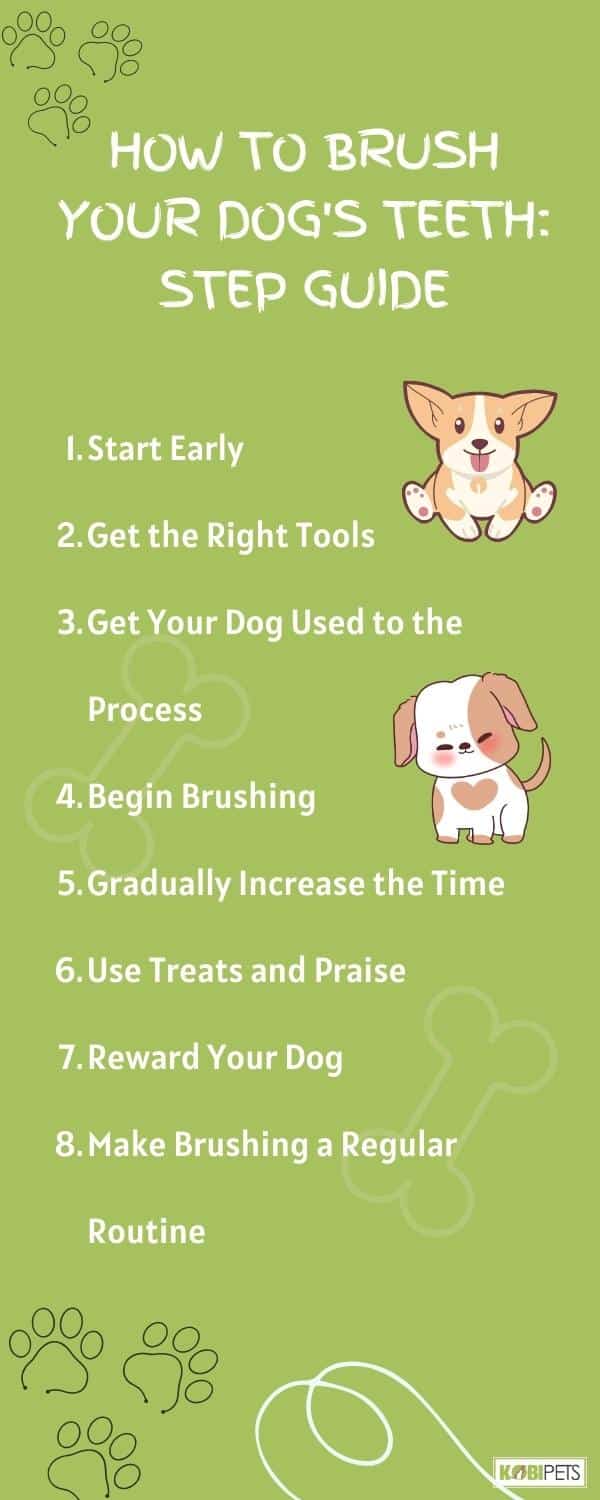
How to Brush Your Dog’s Teeth: Step Guide
Start Early
The earlier you start brushing your dog’s teeth, the easier it will be. Puppies are more adaptable to new experiences and routines, so it’s best to introduce them to tooth brushing as early as possible.
Get the Right Tools
You’ll need a toothbrush and toothpaste specifically made for dogs. Never use human toothpaste on your dog as it can be harmful to their digestive system.
There are several types of dog toothbrushes available, including finger brushes that fit over your finger and regular brushes with long handles.
Get Your Dog Used to the Process
Before you start brushing, let your dog sniff and get used to the toothbrush and toothpaste. Offer them treats and praise to help create a positive association with the process.
Begin Brushing
Once your dog is comfortable with the toothbrush and toothpaste, it’s time to start brushing. Gently lift your dog’s lip to expose their teeth, and start brushing in a circular motion, paying special attention to the back teeth where plaque and tartar tend to build up. Make sure to be gentle and slow, gradually increasing the brushing time as your dog becomes more comfortable.
Gradually Increase the Time
Gradually increasing the brushing time is an important aspect of brushing your dog’s teeth. Start with just a few seconds of brushing and gradually increase the time as your dog becomes more comfortable with the process. This can help prevent stress or discomfort during the brushing process.
Use Treats and Praise
Offer your pup treats and praise throughout the process to show them that brushing their teeth is a positive experience. Choose a time when your pup is calm, such as after they’ve had a meal or at bedtime. Avoid brushing their teeth right after vigorous exercise or playtime.
Reward Your Dog
Rewarding your dog during and after brushing is a crucial step in making the process enjoyable for both you and your furry friend. The best reward to give is one that your dog loves and is motivated by, such as treats, praise, or a fun activity.
Giving treats or praise while brushing can reinforce the positive association and help make brushing a positive experience. After brushing, you can play a game with your dog or give them a special treat to reinforce the positive experience.
Remember, the goal is to make brushing a positive and enjoyable experience for your dog, so choose a reward that your dog will love and look forward to.
Make Brushing a Regular Routine
Making brushing a regular routine is an important aspect of maintaining good dental hygiene for your dog. Brushing your dog’s teeth at least 2-3 times a week is recommended, and it’s important to stick to a consistent schedule.
This will help your dog get used to the routine and make the process easier for both you and your furry friend. Consider incorporating brushing into your dog’s daily routine, such as after mealtime or before bed.
By making brushing a regular and consistent part of your dog’s routine, you can help ensure that their teeth stay healthy and strong.
Other Ways to Care for Your Dog’s Teeth
In addition to brushing your dog’s teeth, there are several other ways you can help keep their dental health in top shape. Here are a few tips for maintaining good oral hygiene:
Give Them Chew Toys
Giving your dog chew toys is another way to care for their teeth and maintain good dental hygiene. Chew toys help remove plaque and tartar buildup, stimulate the gums, and keep your dog’s teeth strong.
There are a variety of chew toys available, including bones, ropes, and toys specifically designed for dental health. When choosing a chew toy, it’s important to choose one that is appropriate for your dog’s size and chewing habits to avoid choking or injury.
Incorporating chew toys into your dog’s routine can help complement their brushing routine and maintain good dental health.

Feed Them a Healthy Diet
Feeding your dog a healthy diet is another important aspect of maintaining good dental hygiene. A diet that is high in nutrients and low in processed foods can help keep your dog’s teeth and gums healthy. Hard, crunchy dog food and treats can also help remove plaque and tartar buildup.
Avoiding soft, sugary foods and treats can also help prevent cavities and other dental problems. Additionally, providing your dog with plenty of clean, fresh water can help keep its mouth hydrated and prevent dry mouth, which can lead to tooth and gum problems.

Visit the Vet
Regular check-ups with your veterinarian can help identify any dental problems early and ensure that your dog’s teeth and gums are healthy. During a check-up, your vet can clean your dog’s teeth, check for signs of decay or gum disease, and provide recommendations for maintaining good dental hygiene.
Additionally, your vet can assess whether your dog needs any additional dental procedures, such as extractions or deep cleanings. Regular check-ups with your vet can help ensure that your dog’s teeth stay healthy and strong and complement your at-home brushing and chewing routines.
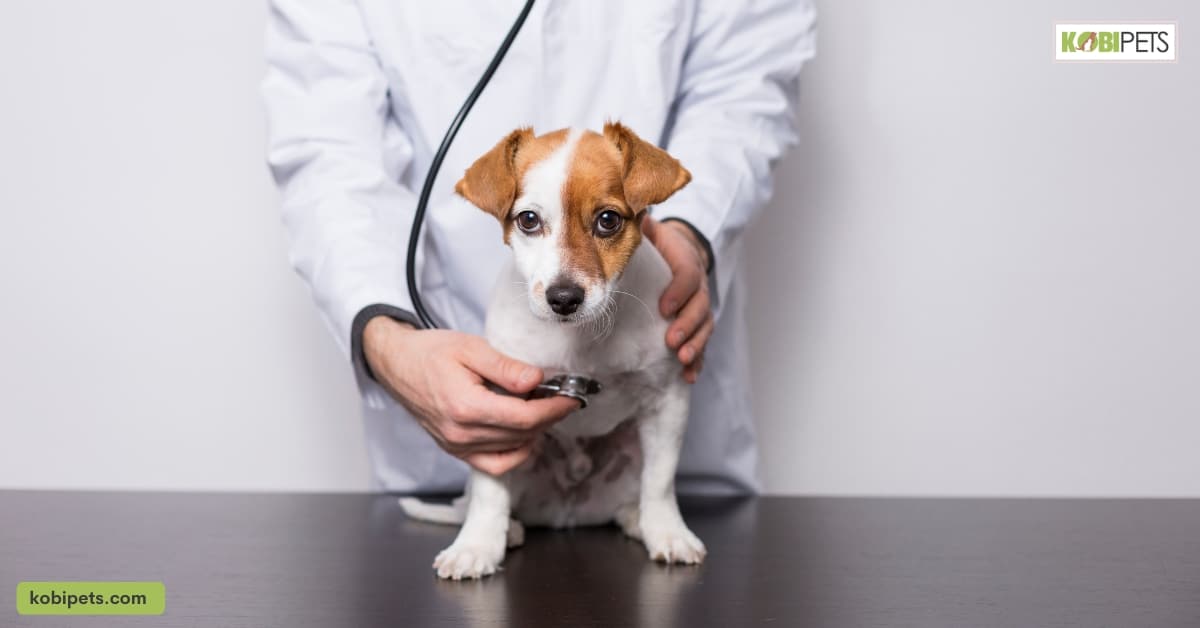
In Conclusion
Brushing your dog’s teeth is a simple and effective way to maintain its overall health and wellness. With the right tools and techniques, you can help prevent gum disease, tooth decay, and bad breath, and keep your dog’s teeth healthy and strong for years to come.
So, make sure to include brushing your dog’s teeth as a regular part of their routine, and remember to always reward them with lots of love and affection.






